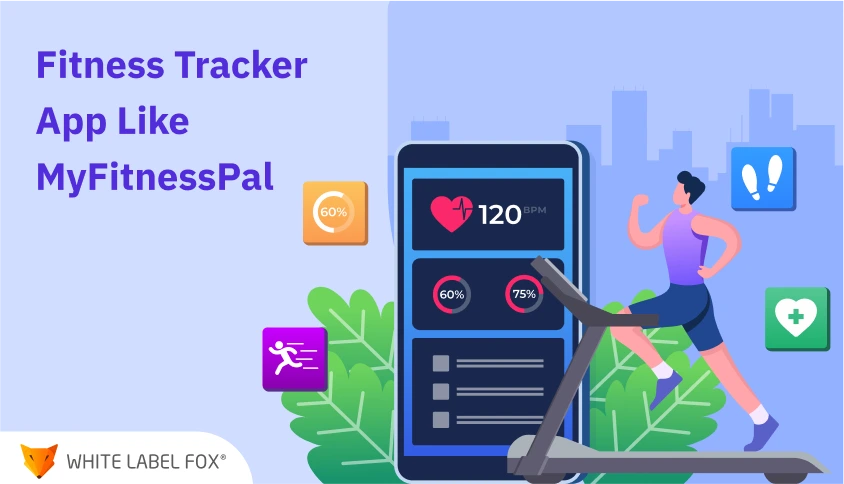The landscape of the doorstep delivery business is rapidly changing, with online meat delivery services experiencing noticeable growth. Customers are becoming increasingly interested in easy, hassle-free shopping experiences, driving demand for fresh, premium seafood delivered right to their home.
Fish delivery services have emerged due to this shift in customer behavior, meeting the growing demand for convenience without sacrificing the freshness of seafood offerings.
Do You Want To Launch Fish Delivery App For Your Business ?
Connect With Our Experts And Discuss Your Ideas.

Families and busy individuals find it convenient to order seafood online and have it delivered right to their homes. In fact, 30% of all meat eaters find it comfortable to buy most of their meat products online. Many consumers are using online fish delivery services to get a large selection of fresh seafood without the trouble of visiting several supermarkets or fish markets because they have busy schedules and little time for grocery shopping.
Therefore, more and more entrepreneurs find this market lucrative and want to launch an online fish delivery business to profit from this expanding market trend in 2024. But how do we start the same? What is a fish delivery business? Keep on reading this blog for more details.
What is a Fish Delivery Service?
A company specializing in fresh seafood right to consumers’ homes is known as a fish delivery service. Customers can order seafood products online or over the phone and have them delivered right to their houses without having to visit a physical store or fish market.
For those who prefer the convenience of having their groceries delivered or who need more time or resources to visit a store, these services provide a convenient option.Fish delivery services get their supplies from reliable vendors, so customers can get fresh, high-quality fish without having to deal with the inconvenience of going shopping in person.
Global Seafood Market Analysis
A meal type known as seafood consists of a variety of sea creatures. Because it is a vital source of significant fatty acids and macro and micronutrients, it is frequently regarded as healthful.
A major factor fueling the global market’s expansion is growing public awareness of the health advantages of seafood.Seafood, for example, is an excellent source of vitamins, minerals, and proteins. Moreover, omega-3 fatty acids found in seafood lower the risk of cardiovascular disease.

As disposable income and urbanization rise, more individuals are relocating to cities with access to a greater range of seafood.
Due to several causes, including growing consumer knowledge of the health advantages of eating seafood, increased demand for foods high in protein, and technological developments in fishing methods and distribution systems.
Seafood is becoming increasingly in demand as consumers value sustainable food choices and grow health-conscious. Let’s check some jaw-dropping numbers,
- According to a report by Allied Market Research, the global seafood market size was valued at $159 billion in 2020 and is projected to reach $193 billion by 2027, growing at a compound annual growth rate (CAGR) of 2.5% from 2021 to 2027.
- The Asia-Pacific region dominates the global seafood market, accounting for the highest market share in value and volume, driven by the significant seafood consumption in countries like China, Japan, and India.
Increasing consumer preferences for convenience and ready-to-eat seafood products are also driving market growth, with online seafood delivery services gaining traction in various regions worldwide.
Dive into Success with Online Fish Delivery Business Models
Online fish delivery services are becoming increasingly popular in the seafood market as people realize how convenient online ordering can be. These companies provide customers with an easy way to get fresh seafood without leaving their homes.
Let’s examine some popular business models that fish delivery services online might use to cater to the different needs of their clients.
Subscription-Based Business Model
Under this concept, customers sign up for a seafood delivery service weekly or monthly. On a regular basis, carefully chosen types of fresh fish and seafood products are delivered right to their home. This model offers consistency and ease for consumers who appreciate seafood daily and prefer hassle-free buying.
Marketplace Model
Customers can interact with a network of seafood providers using online platforms that operate under the marketplace model for fish delivery. Customers can place orders through the site and peruse a large assortment of fresh fish and seafood goods from various providers. This model’s flexibility and choice allow customers to choose from multiple seafood selections from diverse sources.
Hybrid Business Model
The hybrid approach incorporates aspects of marketplace and subscription-based business models. Consumers can tailor their orders to suit their preferences and subscribe to regular seafood deliveries.
Direct-to-Consumer Business Model
Under the direct-to-consumer business model, online fish delivery companies buy seafood directly from fishermen or fisheries, who then deliver the product to clients without needing mediators. This business model supports regional fishermen and encourages sustainable fishing methods while guaranteeing the freshness and quality of the seafood. Consumers value authenticity and openness when it comes to where their seafood originates.
Based on their target market and company objectives, entrepreneurs who want to launch an online fish delivery service can select one of the above business models.
Every model offers the opportunity to serve customers differently, whether they offer a particular niche that caters to specific preferences. Also, with a marketplace model that provides a wide variety of seafood selections, or a subscription-based service that ensures constant delivery.
How to Launch an Online Fish Delivery Business?
Numerous crucial elements are involved in launching an online fish delivery business to ensure success. From market research to delivery platforms to logistics and delivery channels, there are several steps to follow while successfully establishing an online fish delivery business.
Planning and Market Research
Conduct in-depth market research to determine the need for online fish delivery in your target area. Determine your target market, research rivals, and create a thorough business plan that details your pricing strategy, business model, and marketing tactics.
Sourcing Suppliers
For your clients to always have access to fresh, premium seafood, form alliances with reputable fisheries or seafood providers. To appeal to customers who care about the environment, think about purchasing seafood from ethical and sustainable sources.
Building an Online Platform
Putting in place an online delivery platform is essential to your company’s success. Make an investment in an on-demand delivery app so that customers can quickly peruse your seafood selections, place orders, and safely make payments. Make certain that the platform is mobile-friendly.
Logistics and Delivery
Establish effective delivery and logistics procedures to guarantee that seafood orders are delivered to consumers’ doorsteps on time and safely. Think about forming a delivery fleet or collaborating with nearby delivery firms to handle deliveries efficiently. Make sure the seafood stays fresh throughout transportation by employing the right packing supplies and refrigeration techniques.
Promotion and Marketing
Implement a marketing plan to draw clients to your online fish delivery service. To reach your target audience, use a variety of channels, including email marketing, social media marketing, and SEO. To entice clients to test your services, offer loyalty programs, discounts, or promotional packages.
When you work with a white label marketing services supplier for promotion, they will typically handle several key promotional activities like content promotion, social media promotion, influencer marketing, etc.
Customer Support and Feedback
You can deliver exceptional customer service by answering questions right away, taking care of problems quickly, and ensuring your consumers have a great shopping experience. Invite clients to provide reviews and comments, and use this input to improve your products and services.
Launch and Scale
Launch an online fish delivery service and keep a tight eye on its progress. Monitor important indicators like revenue, client retention, and satisfaction levels to evaluate how well your tactics are working. Always continue innovating and changing to grow your company and beat the competition.
How Much Does It Cost to Build a Fish Delivery App?
The cost of developing an app for fish delivery might vary based on several variables, such as features, geography, development costs, and business model selection. Because custom apps involve a lot of coding and customization to suit requirements, they can be costly.
However, by offering a pre-built solution tailored to your company’s needs, choosing a readymade master delivery solution can save significant money. It’s essential to account for development costs when estimating the price of creating a fish delivery app. These costs include:
- Creating the user interface
- Adding functions like order management and payment processing
- Testing the app’s usability and functionality
- Your development team’s location also affects prices, as different areas pay more for developers.
The features you add to your app will also affect how much it costs. Any delivery app must have basic features like product listings, order tracking, and user registration. However, extra features like push notifications, loyalty programs, and real-time GPS tracking can raise the development cost.
Developing a fish delivery app can be more affordable using a white-label delivery platform. Pre-built technologies and editable templates allow you to reduce development time and expenses while still producing high-caliber software that satisfies your company’s requirements.
Jump on the Fish Delivery Business’s Bandwagon with Smart Solution
Now is the perfect time to launch a fish delivery business because of the rising demand for meat delivery services and the popularity of on-demand delivery applications.
The growing number of consumers looking for easy and hassle-free ways to obtain fresh seafood. It’s a big chance for business owners to enter this sector and build a profitable company. Choose an on-demand app development company, take advantage of the opportunity, and establish yourself in the booming fish delivery sector right now. Don’t hesitate any longer.
Frequently Ask Questions
An online fish delivery business allows customers to order fresh
fish
and seafood products via an app or website, which are then delivered
directly to their doorsteps. It combines the convenience of
e-commerce
with the demand for fresh and high-quality fish, catering to
customers
who prefer the convenience of home delivery.
Starting an online fish delivery business in 2024 offers several
advantages:
- Increasing Demand for Fresh Seafood: Consumers are
looking for fresh and high-quality seafood options, often
preferring the convenience of online shopping.
- Growth of E-commerce: The rise of e-commerce and home
delivery services provides a promising market.
- Sustainability Trends: People are increasingly focused on
sustainable and eco-friendly seafood choices, opening up
opportunities for niche offerings.
- Convenience: Busy lifestyles drive demand for convenient
home deliveries, including fresh food options like fish.
- Increasing Demand for Fresh Seafood: Consumers are looking for fresh and high-quality seafood options, often preferring the convenience of online shopping.
- Growth of E-commerce: The rise of e-commerce and home delivery services provides a promising market.
- Sustainability Trends: People are increasingly focused on sustainable and eco-friendly seafood choices, opening up opportunities for niche offerings.
- Convenience: Busy lifestyles drive demand for convenient home deliveries, including fresh food options like fish.
To start an online fish delivery business, follow these key steps:
- Market Research: Understand the local demand, identify
your target audience, and evaluate your competitors.
- Business Model: Decide whether you will sell directly to
customers (B2C) or partner with restaurants (B2B).
- Source Fresh Fish: Establish reliable suppliers or local
fishermen for fresh and quality fish.
- Build an Online Platform: Create a user-friendly website
or mobile app for customers to browse and order products.
- Delivery Logistics: Set up an efficient delivery system
that maintains the freshness of the fish.
- Marketing and Promotion: Use digital marketing strategies
to attract customers to your platform.
- Regulatory Compliance: Ensure compliance with food safety
and business regulations.
- Market Research: Understand the local demand, identify your target audience, and evaluate your competitors.
- Business Model: Decide whether you will sell directly to customers (B2C) or partner with restaurants (B2B).
- Source Fresh Fish: Establish reliable suppliers or local fishermen for fresh and quality fish.
- Build an Online Platform: Create a user-friendly website or mobile app for customers to browse and order products.
- Delivery Logistics: Set up an efficient delivery system that maintains the freshness of the fish.
- Marketing and Promotion: Use digital marketing strategies to attract customers to your platform.
- Regulatory Compliance: Ensure compliance with food safety and business regulations.
Some challenges include:
- Maintaining Freshness: Fish is a perishable product, and
you must ensure that the fish reaches customers in top
condition.
- Supply Chain Management: Managing a reliable supply chain
to source fresh fish regularly.
- Competition: Competing with established grocery stores
and fish markets that may also offer delivery services.
- Logistics: Coordinating timely deliveries while
maintaining product quality can be logistically demanding.
- Maintaining Freshness: Fish is a perishable product, and you must ensure that the fish reaches customers in top condition.
- Supply Chain Management: Managing a reliable supply chain to source fresh fish regularly.
- Competition: Competing with established grocery stores and fish markets that may also offer delivery services.
- Logistics: Coordinating timely deliveries while maintaining product quality can be logistically demanding.
Key features include:
- User-Friendly Interface: Easy navigation for customers to
browse fish varieties and place orders.
- Real-Time Order Tracking: Customers should be able to
track their orders in real-time.
- Payment Integration: Secure payment gateway integration
for seamless transactions.
- Delivery Scheduling: Option to schedule deliveries for
preferred time slots.
- Fish Customization: Allowing customers to choose specific
cuts or preparations of fish (e.g., fillets, steaks).
- Customer Support: Easy access to customer support for
inquiries or issues.
- User-Friendly Interface: Easy navigation for customers to browse fish varieties and place orders.
- Real-Time Order Tracking: Customers should be able to track their orders in real-time.
- Payment Integration: Secure payment gateway integration for seamless transactions.
- Delivery Scheduling: Option to schedule deliveries for preferred time slots.
- Fish Customization: Allowing customers to choose specific cuts or preparations of fish (e.g., fillets, steaks).
- Customer Support: Easy access to customer support for inquiries or issues.
To ensure fish remains fresh:
- Cold Storage: Use refrigerated delivery trucks or coolers
to maintain the temperature during transit.
- Quick Delivery Time: Aim to minimize delivery time to
ensure fish is delivered as quickly as possible.
- Packaging: Use insulated packaging and ice packs to keep
fish fresh during transit.
- Efficient Delivery Network: Employ local delivery
personnel or use technology for route optimization to minimize
delays.
- Cold Storage: Use refrigerated delivery trucks or coolers to maintain the temperature during transit.
- Quick Delivery Time: Aim to minimize delivery time to ensure fish is delivered as quickly as possible.
- Packaging: Use insulated packaging and ice packs to keep fish fresh during transit.
- Efficient Delivery Network: Employ local delivery personnel or use technology for route optimization to minimize delays.
When pricing fish, consider factors like:
- Wholesale Price: The cost of sourcing fresh fish from
suppliers or markets.
- Delivery Costs: Include delivery charges, especially if
you’re offering free delivery.
- Packaging: Factor in the cost of insulated or
eco-friendly packaging.
- Profit Margin: Add a reasonable profit margin while
keeping the price competitive with local markets.
- Special Offers: Offer discounts or promotions to attract
customers.
- Wholesale Price: The cost of sourcing fresh fish from suppliers or markets.
- Delivery Costs: Include delivery charges, especially if you’re offering free delivery.
- Packaging: Factor in the cost of insulated or eco-friendly packaging.
- Profit Margin: Add a reasonable profit margin while keeping the price competitive with local markets.
- Special Offers: Offer discounts or promotions to attract customers.
Legal requirements include:
- Food Safety Standards: Comply with local health and food
safety regulations to ensure your fish products are safe for
consumption.
- Business License: Obtain a license for operating your
online business.
- Tax Registration: Register for taxes, including sales
tax, if applicable.
- Insurance: Consider getting business insurance to cover
potential risks like product liability.
- Packaging Regulations: Ensure that your packaging meets
environmental and food safety standards.
- Food Safety Standards: Comply with local health and food safety regulations to ensure your fish products are safe for consumption.
- Business License: Obtain a license for operating your online business.
- Tax Registration: Register for taxes, including sales tax, if applicable.
- Insurance: Consider getting business insurance to cover potential risks like product liability.
- Packaging Regulations: Ensure that your packaging meets environmental and food safety standards.
To promote your business:
- Social Media: Use platforms like Instagram, Facebook, and
Twitter to showcase your fish products and engage with potential
customers.
- SEO: Optimize your website for search engines to drive
organic traffic.
- Local Advertising: Use local ads, flyers, and
partnerships with restaurants or influencers to boost
visibility.
- Referral Programs: Offer discounts or rewards for
customers who refer others to your service.
- Subscription Plans: Offer subscription models where
customers can receive regular fish deliveries at discounted
rates.
- Social Media: Use platforms like Instagram, Facebook, and Twitter to showcase your fish products and engage with potential customers.
- SEO: Optimize your website for search engines to drive organic traffic.
- Local Advertising: Use local ads, flyers, and partnerships with restaurants or influencers to boost visibility.
- Referral Programs: Offer discounts or rewards for customers who refer others to your service.
- Subscription Plans: Offer subscription models where customers can receive regular fish deliveries at discounted rates.
Some future trends include:
- Sustainability: Offering eco-friendly packaging and
sourcing fish from sustainable sources.
- Subscription Models: More businesses may offer
subscription-based services for regular fish deliveries.
- Technology Integration: The use of AI and data analytics
to predict demand, optimize delivery routes, and improve
customer experience.
- Niche Markets: Catering to specific needs like organic,
wild-caught, or exotic fish.
- Expansion into New Markets: As the demand for online food
delivery grows, expanding into new cities or regions could be a
significant opportunity.
- Sustainability: Offering eco-friendly packaging and sourcing fish from sustainable sources.
- Subscription Models: More businesses may offer subscription-based services for regular fish deliveries.
- Technology Integration: The use of AI and data analytics to predict demand, optimize delivery routes, and improve customer experience.
- Niche Markets: Catering to specific needs like organic, wild-caught, or exotic fish.
- Expansion into New Markets: As the demand for online food delivery grows, expanding into new cities or regions could be a significant opportunity.

















